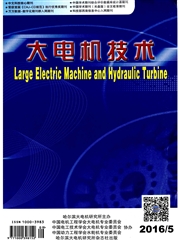

 中文摘要:
中文摘要:
提高风电场的低电压穿越能力LVRT(Low Voltage Ride Through)以及维持并网系统暂态稳定具有重大意义。针对双馈风电机组利用自身背靠背变流器控制电磁转矩和无功功率这一方案的不足以及撬棒保护电路(Crowbar)在故障期间频繁投入与退出可能引起电磁转矩波动的问题。分析了UPFC和双馈风电机组的数学模型与控制策略,在DlgSlLENT/PowerFactory中建立了含UPFC的风电并网系统仿真模型,通过研究故障前后风电场PCC节点电压,风电场发出功率状况以及风电机组的转速稳定性,验证了UPFC对风电场电压稳定的支撑作用,并能维持风电并网系统的暂态稳定。
 英文摘要:
英文摘要:
It is essential to improve the Low voltage ride through(LVRT) capability and transient stability of wind farms. But for a DFIG based wind turbine, with the insufficient of the back to back converters using which both the electromagnetic torque and the reactive power can be controlled, and the crowbar switched on and off during the grid fault may induce electromagnetic torque fluctuation. By means of mathematical models and control strategies of UPFC and wind turbine, the simulation models is set up on DIgSILENT/PowerFactory. Through analysis the voltage at PCC node, reactive power generation and the rotor speed of DFIG based wind farms. Simulation results prove that UPFC can support the voltage and maintain the transient stability of wind farms.
 同期刊论文项目
同期刊论文项目
 同项目期刊论文
同项目期刊论文
 期刊信息
期刊信息
